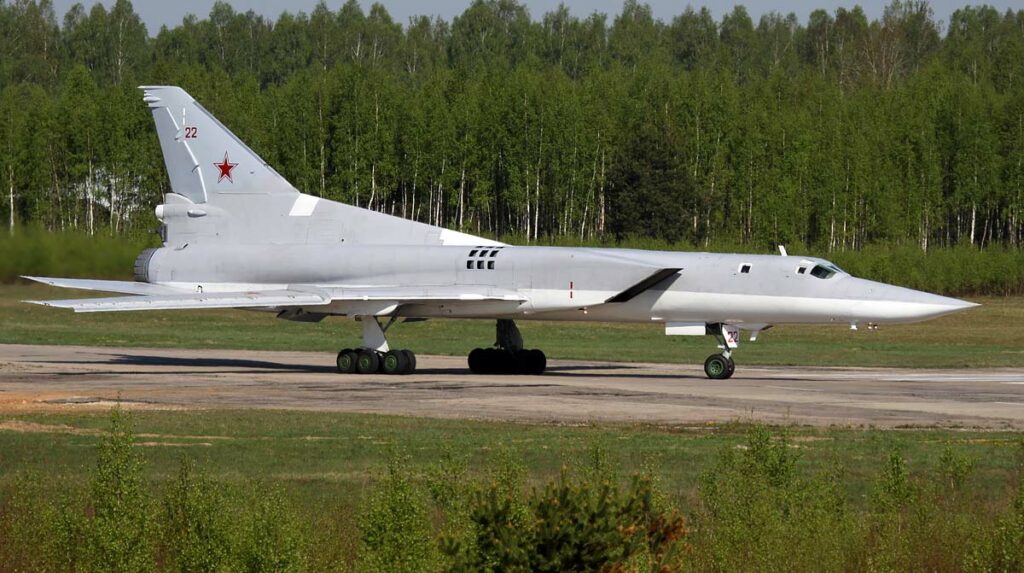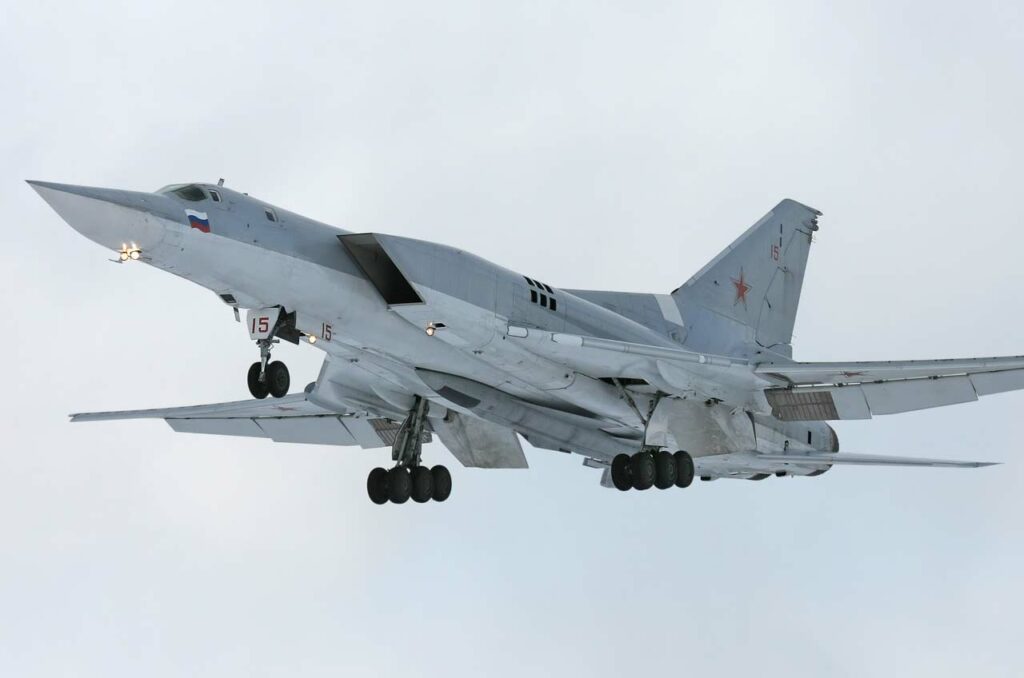The Tu-22M Backfire is a supersonic, long-range, strategic and maritime strike bomber developed by the Soviet Union.
In brief
The Tupolev Tu-22M Backfire is a versatile, long-range strategic and maritime strike bomber capable of reaching Mach 2.05 with a range of up to 6,800 miles using aerial refueling. Introduced in the 1970s, it features variable-sweep wings, allowing for efficient flight at various speeds and altitudes. The aircraft is equipped with advanced navigation and targeting systems, enabling it to carry a mix of guided and unguided weapons, including nuclear missiles. Over its operational life, the Tu-22M has seen several upgrades to its avionics and armament, ensuring its continued relevance in modern aerial warfare.
The Tu-22M Backfire bomber represents a significant evolution in Soviet military aviation, designed to meet the dual needs of strategic bombing and maritime strike capabilities within a single platform. Its development was a response to changing military doctrines and the technological advancements of the Cold War era.

History of the Development of the Tupolev Tu-22M Backfire
In the context of escalating Cold War tensions, the Soviet Union sought to enhance its long-range strike capabilities against NATO naval groups and strategic targets. The Tupolev Design Bureau initiated the development of the Tu-22M in the late 1960s as an advancement over the earlier Tu-22 Blinder. The aim was to create an aircraft capable of delivering a variety of weapons over long distances at high speeds, challenging Western air defenses. The Tu-22M first flew on 30 August 1969, marking the birth of a new generation of Soviet strategic bombers. Its NATO nickname “Backfire” encapsulated Western perceptions of the threat it posed.
Design of the Tupolev Tu-22M Backfire
The Tu-22M’s design is characterized by its variable-sweep wings, which provide optimal aerodynamic performance across a wide range of speeds and mission profiles. This feature allows for short takeoff runs at higher angles of wing sweep and high-speed, low-level penetration at minimum sweep. The aircraft’s length of 42.46 meters and a wingspan ranging from 23.30 meters (swept) to 34.28 meters (extended) support its strategic bombing role. Powered by two Kuznetsov NK-25 turbofan engines, the Tu-22M can carry a significant payload of up to 24,000 kg of munitions, including anti-ship missiles, free-fall bombs, and nuclear weapons. Despite its strengths, the aircraft’s complexity and maintenance demands represent challenges to operational readiness.
Performance of the Tupolev Tu-22M Backfire
The Tu-22M’s performance metrics are impressive, with a top speed of Mach 2.05 and a service ceiling of 13,300 meters. Its operational range of 2,200 kilometers can be extended to 6,800 kilometers with in-flight refueling. These capabilities allow the Tu-22M to execute a variety of strategic missions, from deep-strike bombing to maritime reconnaissance and anti-ship warfare. When compared to Western counterparts like the B-1 Lancer, the Tu-22M offers unique advantages in speed and versatility, though it may lack some of the advanced stealth and avionics features of newer aircraft.
Variants of the Tupolev Tu-22M Backfire
Several variants of the Tu-22M have been developed to enhance its operational effectiveness. The Tu-22M3, the most advanced version, features improved engines, avionics, and weapon systems, including the capability to carry long-range cruise missiles like the Kh-55 and anti-ship missiles such as the Kh-22. Each variant reflects ongoing efforts to adapt the Backfire to evolving warfare requirements and technological advancements.

Military Use and Combat of the Tupolev Tu-22M Backfire
The Tu-22M Backfire has been a key asset in the Soviet and Russian arsenals, participating in various conflicts and showing its strategic value. It saw action in Afghanistan during the Soviet-Afghan War, where it was used for high-altitude bombing missions. More recently, Tu-22Ms have been deployed in Syria, showcasing their long-range strike capabilities against ground targets. The aircraft’s ability to carry a diverse array of weapons, from conventional bombs to advanced cruise missiles, has made it a flexible tool in projecting power and conducting precision strikes.
The Tu-22M has been exported to countries aligned with Soviet and Russian interests, including India, which has utilized the maritime strike capabilities of the aircraft. Despite its age, the Tu-22M remains in service, with ongoing upgrades ensuring its place in future military operations.
Recap
The Tupolev Tu-22M Backfire bomber stands as a significant achievement in aviation engineering, embodying the strategic and tactical versatility required by modern warfare. Its development and operational history highlight the importance of long-range strike capabilities in maintaining global security balances. As it continues to serve in various capacities, the Tu-22M exemplifies the enduring value of adaptability and innovation in military aviation.
Back to the Bombers section.